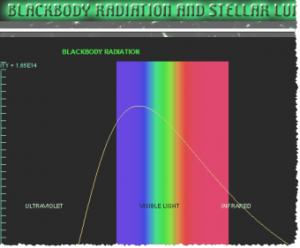Star brightness and star distance: Difference between revisions
mNo edit summary |
m (The picture of Christian Huygens is PD from wikipedia) |
||
| Line 6: | Line 6: | ||
|topic=Astronomy | |topic=Astronomy | ||
|subject=Science | |subject=Science | ||
|tagline= | |tagline=A slide presentation to explain how we measure stars, then and more. | ||
|image= | |image=Starsandbrightness0.png | ||
|resourcenumber= SC0035 | |resourcenumber= SC0035 | ||
|Learning Objectives= | |Learning Objectives= | ||
* | * recall how star distances were calculated using parallax | ||
* | * explain how Christian Huygens calculated the distance of the star Sirius | ||
* | * explain how Huygens' assumptions led to an inaccurate calculation | ||
* | * how we use black body radiation to calculate the temperature of distant stars | ||
|age=Secondary | |age=Secondary | ||
|content= | |content=In the 17th century, Christian Huygens discovered how to estimate how far away a star is. He made a series of smaller holes in a screen facing the sun, until he estimated the light was the same intensity as the star Sirius. Huygens' results were surprisingly accurate, but still wrong. This series of slides may inspire you to tell the remarkable story of how we measure stars. The teacher explains his approach in an audio file and provides a web link to an interactive tool used in the presentation. The presentation had been converted to alternative formats. | ||
|format= | |format= | ||
|strategy= | |strategy= See the teacher's note on 'active-note taking' | ||
|additional resources= | |additional resources= | ||
|useful information= | |useful information= | ||
| Line 23: | Line 23: | ||
|other= | |other= | ||
|resources= | |resources= | ||
* Smartboard notebook | * Smartboard notebook version [[File:10 - Star Brightness, Size and Distance.notebook]] | ||
* Powerpoint version:[[ ]] | * Powerpoint version:[[File:10 - Star Brightness, Size and Distance.pptx]] | ||
* PDF | * PDF version [File:Star brightness & distance.pdf]] | ||
* | * Teacher's audio explanation of how the lesson was delivered [[media:CT - Star brightness voiceover.MP3]] | ||
* Link to Blackbody Radiation Applet http://www.mhhe.com/physsci/astronomy/applets/Blackbody/frame.html | |||
}} | }} | ||
Revision as of 18:58, 26 September 2012
Astronomy - presentations
[[|<<<]]
[[|>>>]]
This resource may not be final.
Lesson idea. In the 17th century, Christian Huygens discovered how to estimate how far away a star is. He made a series of smaller holes in a screen facing the sun, until he estimated the light was the same intensity as the star Sirius. Huygens' results were surprisingly accurate, but still wrong. This series of slides may inspire you to tell the remarkable story of how we measure stars. The teacher explains his approach in an audio file and provides a web link to an interactive tool used in the presentation. The presentation had been converted to alternative formats.
Teaching approach. Students are challenged to put aside ‘modern knowledge’ of astronomy and consider the position of Huygens in the 17th Century. This lesson uses a story and humour to draw students into a narrative and place them in a dialogue with Christiaan Huygens, a character from astronomy history. The lesson model is that of active note-making. Students are provided with mini-diagrams* around which they build up personalised notes about the lesson. Students must not take notes from the board but instead must use their creativity to develop their own notes. They are encouraged to use colour, image, symbols, humour and metaphor to lead them through a richer learning experience. Students need help in achieving this but soon catch onto the idea. They become more independent with taking notes and more attentive to the subject at hand. The resource would be used in a whole class setting although each chapter of the story focuses on small group discussion and feedback. The teacher keeps a clear focus to use open rather than closed questioning throughout.
- Two sets of mini-diagrams can be printed to ensure that students have a shared visual resource on which they can build their memories. This is used by students as the centre-point of their notes. (edit)
| Resource details | |
| Title | Star brightness and star distance |
| Topic | |
| Teaching approach | |
| Learning Objectives |
|
| Format / structure | |
| Subject | |
| Age of students / grade | |
| Table of contents | |
| Additional Resources/material needed | |
| Useful information | |
| Related ORBIT Wiki Resources | |
| Other (e.g. time frame) | |
| Files and resources to view and download |
|
| Acknowledgement | |
| License | |

